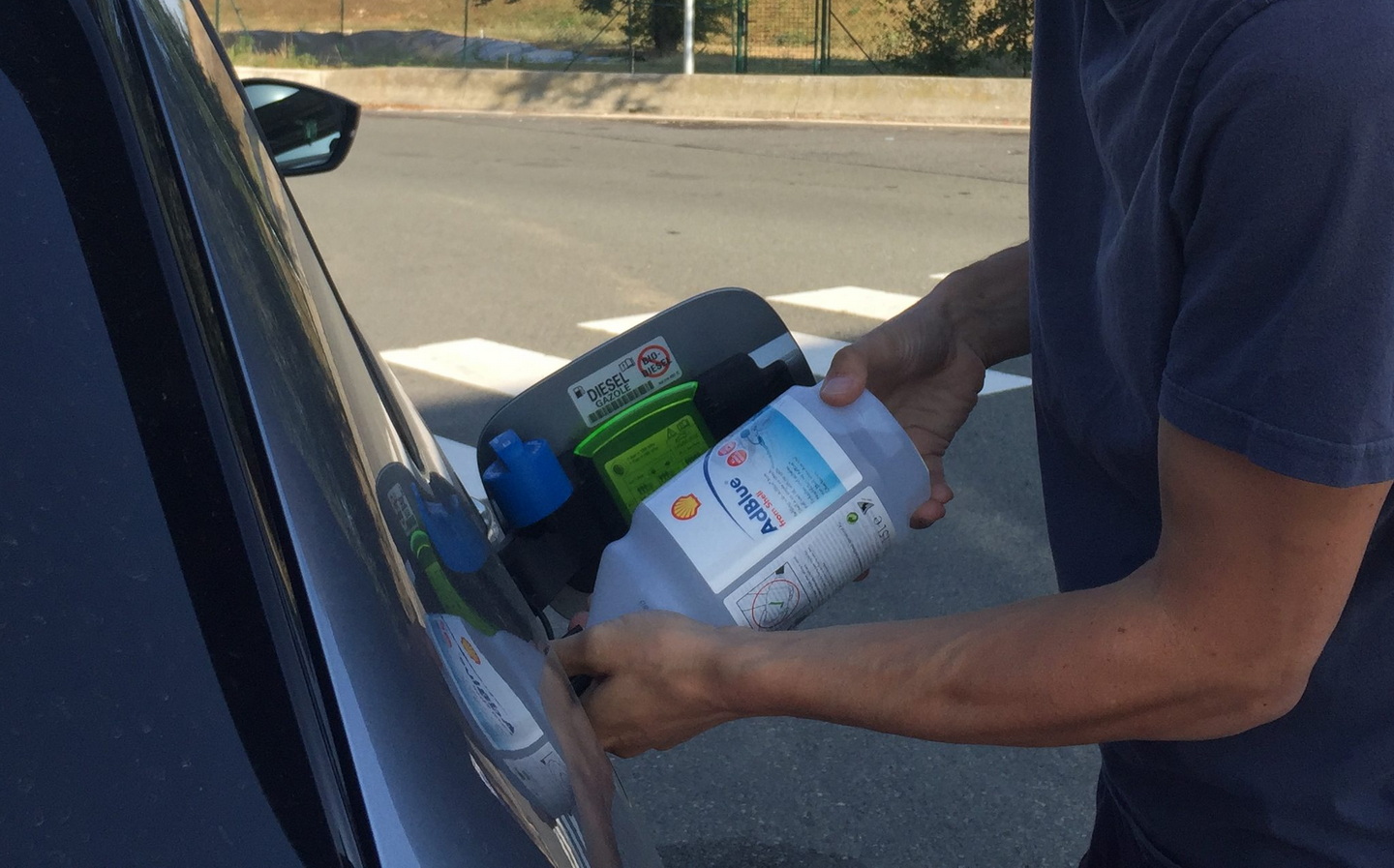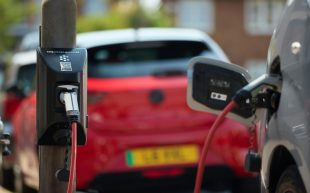What is AdBlue, how much is it, and where to buy it?
A practical guide for drivers
Since 2015, most new cars with diesel engines have been fitted with an exhaust treatment system that uses AdBlue to help reduce toxic emissions. AdBlue is a specially-formulated liquid that is stored in its own tank in the car and injected into the exhaust system to help neutralise harmful gases that can contribute to poor air quality in towns and cities.
Air pollution caused mostly by traffic emissions contributes to some seven million deaths worldwide every year according to the World Health Organisation, with the Royal College of Physicians concluding that traffic fumes have played a big part in the early deaths of 40,000 people in the UK. Diesel engines specifically have been the subject of much criticism due to their higher levels of nitrogen oxide (NOx) emissions, which can negatively impact respiratory health.
Once hailed as an eco-friendly alternative to petrol thanks to its relative efficiency, diesel soon lost its lustre thanks to a series of scandals in 2015 known as Dieselgate in which Volkswagen and a number of other manufacturers were found to be cheating on emissions tests. The scam involved the fitment of cheat devices that could recognise when cars were being tested, which resulted in emissions figures much lower than the cars actually produced under real-world conditions. Since then, partially as a result of the rise of the electric car and more economical turbocharged petrol engines and partially due to a total loss of public trust in diesel, sales of diesel cars have been on a precipitous decline. Diesel sales fell by more than 48% in 2021 compared to the previous year and diesel cars are now comfortably outsold by electric models.
All that said, however, it should be noted that modern diesel engines are actually cleaner than ever before, much of which is down to the use of AdBlue. For those who drive a large MPV or off-roader or who regularly cover high mileages, a diesel car still is a viable alternative to a petrol or hybrid model as it is for those who can’t yet make the switch to an electric vehicle. Thanks to AdBlue and the latest generation of cleaner diesel engines, it’s not as environmentally toxic as it might once have been. The latest Euro 6 emissions standards, for instance, with which all current manufacturers on the UK market comply, demanded a 67% drop in NOx emissions from diesel exhausts.
In everyday driving the AdBlue diesel exhaust fluid treatment system works automatically and goes unnoticed, but it does require refilling over time. Here’s everything you need to know about AdBlue and how it all works.
What is AdBlue?
One of the latest techniques used to clean up diesel emissions is known as selective catalytic reduction (SCR). A liquid is used to treat exhaust gases and remove harmful pollutants, including nitrogen oxides (NOx), of which nitrogen dioxide (NO2) is the most harmful.
The fluid used in most vehicles is known as AdBlue, a registered trademark owned by the German Association of the Automobile Industry (VDA), which ensures standards are maintained. The fluid is stored in a tank in the car, but unlike petrol or diesel it is not injected into the engine; instead it is fed into part of the vehicle’s exhaust. A chemical reaction converts the harmful NOx exhaust gases into harmless nitrogen and water.
- Buy AdBlue from Amazon – Shop here
What is AdBlue made of?
Some believe that AdBlue is made from pig urine and is blue in colour, but neither is true. AdBlue is actually a colourless liquid made up of high purity urea and deionized water.
Which cars use AdBlue?
Modern technology such as SCR and AdBlue is still found mainly in bigger, more expensive diesel models. That is because the system is both too large and too expensive to squeeze into small runabouts.
In tests, small diesel cars without SCR, such as the 2016 Volkswagen Polo 1.4 TDI, have been found to be as toxic as a fully laden lorry. In measurements taken by Leeds University’s Institute of Transport Studies, the Polo emitted 1.2g of nitrogen dioxide per kilometre travelled, which is the same as a fully laden diesel lorry with a 13-litre engine.
The inability for manufacturers to easily reduce the emissions of small diesel engines with the addition of AdBlue systems has led to an overall decline in the number of small diesel cars on the market, the majority of superminis and smaller cars now being driven by economical turbocharged petrol engines and/or hybrid powertrains.
Does my car use AdBlue?
When you buy a new or used diesel car from a dealership, the sales person should explain what features it has and specifically whether it uses AdBlue. Some cars have a blue or black screw cap for AdBlue next to the black diesel filler cap. In others, the cap is in the boot, or in the engine compartment. The vehicle handbook will explain the requirements of your car’s system.
Wherever the filler is, your car will warn you on the dashboard if the AdBlue tank needs a top up (see below).
How long does AdBlue last and how much AdBlue do I need?
The tank that holds the AdBlue solution varies in size between makes and models of car. As a guide, a Volkswagen Tiguan SUV and Passat family car have a 12 and 13-litre AdBlue tank respectively.
The rate at which it is consumed depends on the size of the car and the driving style; the more economical the car and driver, the slower it will be used. VW estimates that the Tiguan and Passat use 1.5 litres of AdBlue every 620 miles, and suggests that a tankful of AdBlue gives a driving range of 3,000-4,000 miles for the Tiguan, and 4,000-6,500 miles for the Passat.
By contrast, Peugeot estimates that its cars can travel 12,000 miles between refills — the same as its servicing intervals.
How will drivers know if AdBlue needs topping up?
The car’s driver information display screen should flash up warnings, much as it would if fuel or windscreen washer fluid were low.
Failing to act on these warnings will ultimately result in the car refusing to start until the AdBlue tank is filled.
Can drivers refill AdBlue themselves?
Garages should refill AdBlue as part of a diesel car’s routine servicing. However, it’s possible to refill a tank of AdBlue yourself.
Some service stations have AdBlue dispensing pumps. Alternatively, garages and filling stations sell portable containers of AdBlue, as do many online retailers, such as Amazon.co.uk and Halfords.com.
Is all AdBlue the same?
Whilst most AdBlue mixes are made up of the same quantities of urea (32.5%) and de-ionised water (67.5%), you may find some solutions called something different, BlueTech or Bluedef, or simply “urea solution”.
Those without the AdBlue trademark may not be of the same quality, and could damage the engine of your car. Therefore, we recommend sticking to branded Adblue, such as the following:
- Status AdBlue, 2 x 10L, £41.90 at Amazon – buy here
- Halfords AdBlue 3.5L, £9.49 at Halfords – buy here
- Redex AdBlue 5L with spout, £14.05 at Amazon – buy here
- Greenchem Adblue 10L, £25.49 at Euro Car Parts – buy here
Where to buy AdBlue
As we mentioned above, some service stations will have AdBlue dispensers that you can use to refill your tank. Many, too, will sell both small bottles and larger containers should you need to buy AdBlue in a pinch. Nearly all motor factors will sell it, as will most supermarkets.
Other places you can buy AdBlue from include:
How much is AdBlue?
The price of AdBlue starts at roughly £8 for a 5l container, at the time of writing. Some car makers suggest that you take your car to a dealer for a refill usually at a reasonable fixed price.
How to reset the AdBlue warning
- Fill up your tank with Adblue
- Switch on the ignition (not the engine)
- Wait for up to one minute, the warning should then clear
If this still doesn’t clear it, we recommend taking the car to your dealership as they can help update the software.
Emergency top-up bottles of AdBlue
Some high-mileage drivers carry 1-litre emergency bottles of AdBlue in the boot of their car, safe in the knowledge that should they need to fill the system at short notice, they will be able to do so. The fluid is corrosive, so some car companies do not recommend this.
AdBlue and your car’s warranty
If your car has a warranty, it is important to use branded AdBlue solution. For any solution to use this trademark, it must comply with certain standards that vehicle manufacturers’ SCR systems rely on. Failing to do so could invalidate the warranty.
What happens if your car runs out of AdBlue?
When your car’s AdBlue level starts to run low it will alert you prior to starting the engine, usually indicating how many miles of driving is remaining. It’s important that you don’t ignore this, as once it runs out it will not be possible to start the engine until the system is refilled.
If you happen to run out of AdBlue while driving, the engine’s power and performance will be reduced. The car does this to prevent any potential damage to the system occurring. Should this happen it is recommended that you immediately drive to the nearest service station where AdBlue is available and refill the tank.
Stopping the engine before this will render the car immobile. Once refilled, you may have to wait for the car to reset its system after refilling, but this generally happens automatically.
Can I use water instead of AdBlue?
Although AdBlue is made up mostly of de-ionised water, you cannot use water to fill the tank. All trademarked AdBlue products meet a specific standard, so it is essential that you avoid using any other product that is not recommended as it could damage your car’s SCR system resulting in costly repairs that won’t be covered by a warranty.
And water, of course, will do nothing to eliminate harmful emissions from your exhaust.
Does AdBlue affect fuel consumption?
Not especially. AdBlue is injected into the exhaust gases after the combustion process takes place and, thus, it has little or no effect on fuel consumption. There’s currently very little data to suggest that AdBlue affects fuel consumption either positively or negatively and any slight increases or decreases are factored in to the fuel consumption figure by manufacturers.
My AdBlue warning light is on — what should I do?
A car using AdBlue will give plenty of advance notice before running out. From the time the AdBlue warning light comes on, drivers usually have around 1,200-1,500 miles before their car runs out. The AdBlue warning light will remain on until the AdBlue is topped up. If your car is due a service within the next 1,000 miles or so, it’s probably alright to wait for your mechanic or dealer to top up the AdBlue. If not, however, drivers should do it themselves as soon as possible.
What should I do if I put diesel in the AdBlue tank?
Do not start the car. Call a dealer, mechanic or breakdown service in order to get the tank drained. Starting the car could severely damage components in the catalytic and AdBlue injection systems.
What should I do if I put AdBlue in the diesel tank?
Do not start the car as doing so could totally wreck the engine. Call a dealer, mechanic or breakdown service in order to get the fuel tank drained and system flushed. Starting the car before having the fuel tank and system drained could cause so much damage as to potentially write the car off.
This article features products that have been chosen independently by Driving.co.uk journalists, and our reviews are unbiased. We may earn revenue if you click the links and buy the products, but we never allow this to affect our opinions.
Related articles
– Enjoyed reading our guide to AdBlue? Then you might also like our guide to keyless car theft prevention.
– Sales of new diesel and petrol cars will be banned from 2030. Here’s everything you need to know.
– Heading into London? Check if your car is exempt from the ULEZ here.
Latest articles
- Aston Martin Valkyrie AMR-LMH hypercar hits track ahead of 2025 Le Mans challenge

- Porsche has begun testing the electric Cayenne

- Cupra Leon 272 eHybrid 2024 review: Bigger battery, better tech … but is it a Cupra?

- Porsche 911 GTS 2024 review: Hybrid heresy or more Stuttgart genius?

- Extended test: 2023 Vauxhall Astra Sports Tourer GS PHEV






